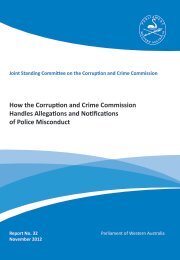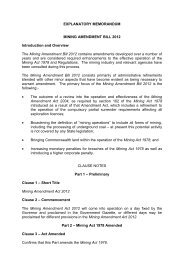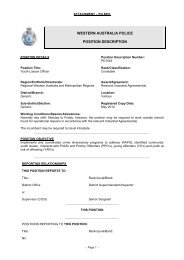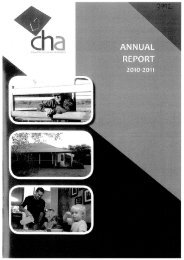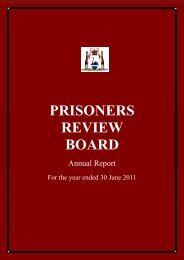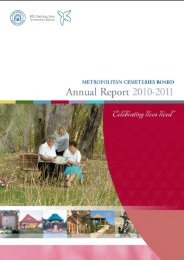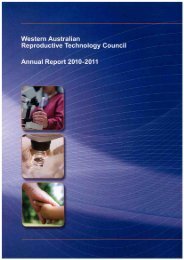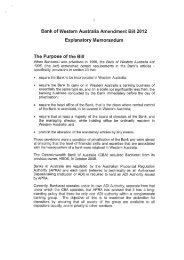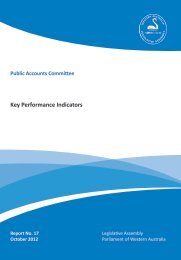Broome Port Authority - Parliament of Western Australia
Broome Port Authority - Parliament of Western Australia
Broome Port Authority - Parliament of Western Australia
You also want an ePaper? Increase the reach of your titles
YUMPU automatically turns print PDFs into web optimized ePapers that Google loves.
The <strong>Authority</strong> makes concurrent contributions to the Government Employee Superannuation Board<br />
(GESB) on behalf <strong>of</strong> employees in compliance with the Commonwealth Government’s<br />
Superannuation Guarantee (Administration) Act 1992. These contributions extinguish the liability for<br />
superannuation charges in respect <strong>of</strong> the WSS and GESB Super Schemes.<br />
Defined benefit plan<br />
The <strong>Authority</strong>’s net obligation in respect <strong>of</strong> defined benefit pension plan is calculated separately by<br />
estimating the amount <strong>of</strong> future benefit that employees have earned in return for their service in the<br />
current and prior periods; that benefit is discounted to determine its present value, and the fair value<br />
<strong>of</strong> any plan assets is deducted. These benefits are unfunded.<br />
The discount rate used is the market yield rate at the balance sheet date on national government<br />
bonds that have maturity dates approximating to the terms <strong>of</strong> the entity’s obligations. The calculation<br />
is performed by a qualified actuary using the actuarial cost method.<br />
The superannuation expense <strong>of</strong> the defined benefit plan is made up <strong>of</strong> the following elements:<br />
• Current service cost;<br />
• Interest cost (unwinding <strong>of</strong> the discount);<br />
• Actuarial gains and losses; and<br />
• Past service cost.<br />
Actuarial gains and losses <strong>of</strong> the defined benefit plan are recognised immediately as income and<br />
expense in the income statement.<br />
The superannuation expense <strong>of</strong> the defined contribution plan is recognised as and when the<br />
contributions fall due.<br />
o) Dividends<br />
Dividends are recognised as a liability in the period they are declared.<br />
p) Provisions<br />
A provision is recognised if, as a result <strong>of</strong> a past event, the <strong>Authority</strong> has a present legal or<br />
constructive obligation that can be estimated reliably and it is probable that an outflow <strong>of</strong> economic<br />
benefits will be required to settle the obligation. If the effect <strong>of</strong> the time value <strong>of</strong> money is material,<br />
provisions are determined by discounting the expected future cash flows at a pre-tax rate that<br />
reflects current market assessments <strong>of</strong> the time value <strong>of</strong> money and the risks specific to the liability.<br />
Where discounting is used, the increase in the provision due to the passage <strong>of</strong> time is recognised as<br />
finance costs.<br />
q) Cash and cash equivalents<br />
Cash and cash equivalents in the balance sheet comprise cash on hand, cash at bank, at call<br />
deposits and term deposits due within 30 days.<br />
For the purpose <strong>of</strong> the cash flow statement, cash equivalents consist <strong>of</strong> cash and cash equivalents<br />
as defined above.<br />
Page 49 <strong>of</strong> 79



